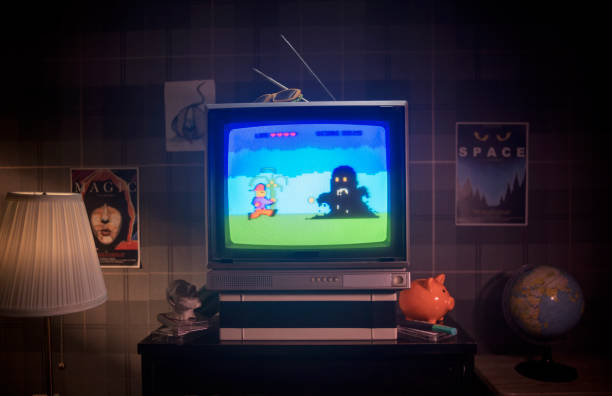Pac-Man is an iconic arcade game that has captivated players worldwide since its release in 1980. Developed by Namco, the game features a yellow, pizza-shaped character named Pac-Man, who navigates through a maze while devouring pellets and avoiding colorful ghosts. In this article, we’ll delve into the history, gameplay, popularity, and legacy of Pac-Man, as well as its evolution and impact on popular culture.
- Introduction
Pac-Man is a classic arcade game that revolutionized the gaming industry. Its simple yet addictive gameplay, memorable characters, and catchy music made it an instant hit, attracting players of all ages. The game’s success paved the way for numerous sequels, spin-offs, and adaptations, cementing its status as a cultural phenomenon.
- History of Pac-Man
2.1. Development
Pac-Man was created by the legendary game designer Toru Iwatani. Inspired by the concept of eating, Iwatani aimed to develop a rca1688 game that appealed to a broader audience beyond the predominantly male demographic. The design of the Pac-Man character, with its friendly and approachable appearance, was a deliberate departure from the fierce-looking protagonists of other games at the time.
2.2. Release and Impact
Pac-Man was released in May 1980 and quickly became a sensation in arcades worldwide. Its popularity soared, surpassing even the most optimistic expectations. The game’s intuitive controls and addictive gameplay mechanics made it accessible to both casual and experienced gamers. Pac-Man’s success led to a surge in the popularity of arcades and inspired other developers to create their own maze-chase games.
- Gameplay
3.1. Objective
The objective of Pac-Man is simple: guide the titular character through a maze and help him devour all the pellets while avoiding the ghosts. Each level presents a new maze layout, and as Pac-Man eats the pellets, the ghosts become vulnerable, allowing him to eat them for extra points. The player must strategize their movements to outmaneuver the ghosts and clear the maze.
3.2. Characters
The game features several characters, each with its own behavior. The ghosts—Blinky, Pinky, Inky, and Clyde—pursue Pac-Man, trying to impede his progress. Their distinct personalities and tactics add depth to the gameplay. Pac-Man’s quest is also aided by power-ups, such as the energizer, which temporarily turns the ghosts blue and allows him to eat them.
3.3. Power-ups
In addition to the energizer, Pac-Man can collect various fruits and bonus items for extra points. These items appear in the maze at specific intervals, encouraging players to explore different areas. Power pellets, scattered throughout the maze, grant Pac-Man temporary invincibility, enabling him to turn the tables on the ghosts.
- Popularity and Legacy
4.1. Cultural Impact
Pac-Man’s impact on popular culture cannot be overstated. The game introduced the concept of a “mascot” character in gaming, paving the way for iconic figures like Mario and Sonic. Pac-Man became a symbol of the video game industry and inspired a wide range of merchandise, including toys, clothing, and even an animated TV series.
4.2. Merchandise
The success of Pac-Man led to a merchandising frenzy. Pac-Man-themed merchandise flooded the market, with items ranging from t-shirts and lunchboxes to board games and collectible figurines. The game’s popularity extended beyond the gaming community, permeating mainstream culture and becoming a recognizable symbol of the 1980s.
- Evolution of Pac-Man
5.1. Sequels and Spin-offs
Pac-Man’s success spawned a series of sequels and spin-offs. Developers introduced new features, maze designs, and power-ups, keeping the gameplay fresh and exciting. Pac-Man Jr., Super Pac-Man, and Pac-Mania are just a few examples of the franchise’s enduring legacy, each offering unique twists on the original concept.
5.2. Pac-Man Championship Edition
In 2007, Namco released Pac-Man Championship Edition, a modern reimagining of the classic game. The Championship Edition introduced new gameplay mechanics, vibrant visuals, and fast-paced action. It revitalized interest in Pac-Man and garnered critical acclaim for its innovative take on the iconic formula.
- Pac-Man in Popular Culture
6.1. References in Movies and TV
Pac-Man’s influence extends to movies and TV shows, where it is frequently referenced and featured. Films like “Pixels” and “Wreck-It Ralph” pay homage to the game, showcasing its enduring popularity and nostalgic appeal. Pac-Man’s distinct design and gameplay have become synonymous with retro gaming in popular culture.
6.2. Music and Art
Pac-Man has inspired artists and musicians worldwide. Its iconic characters and catchy tunes have been featured in various art installations, album covers, and music videos. The game’s vibrant visuals and energetic soundtrack continue to resonate with fans, reflecting its timeless appeal.
- Conclusion
Pac-Man remains an iconic game that continues to captivate players and inspire new generations of game designers. Its simple yet addictive gameplay, memorable characters, and cultural impact have solidified its place in gaming history. Whether you’re a seasoned gamer or new to the world of arcade classics, Pac-Man’s enduring charm ensures it will be enjoyed for years to come.
- FAQs
Q1: What is the highest score ever achieved in Pac-Man? The highest score ever achieved in Pac-Man is 3,333,360 points, the maximum score possible due to an integer overflow bug in the game’s code.
Q2: Are there any cheat codes for Pac-Man? Pac-Man does not have any built-in cheat codes. The game is meant to be played skillfully, and using cheats can undermine the challenge and overall experience.
Q3: Can I play Pac-Man on modern gaming platforms? Yes, Pac-Man is available on various modern gaming platforms, including consoles, PCs, and mobile devices. You can enjoy the classic game or try out the newer iterations and adaptations.
Q4: How many ghosts are there in Pac-Man? Pac-Man features four ghosts: Blinky (red), Pinky (pink), Inky (cyan), and Clyde (orange). Each ghost has its own behavior and adds to the strategic depth of the gameplay.
Q5: Has Pac-Man inspired any other games? Pac-Man’s success has inspired numerous games and game designers. The maze-chase genre, characterized by navigating through mazes while avoiding enemies, owes its roots to Pac-Man’s groundbreaking gameplay mechanics.

